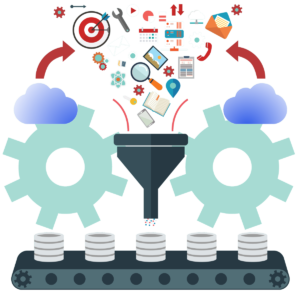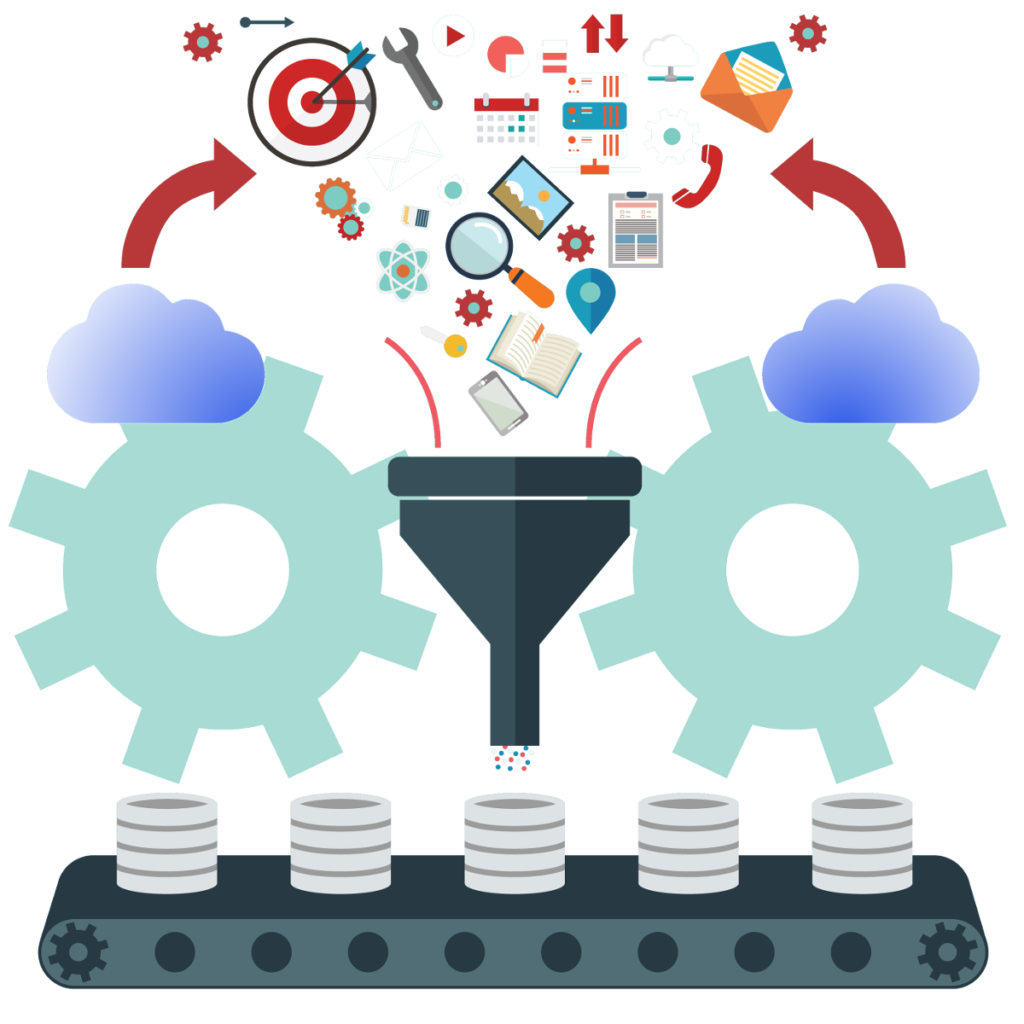Data Mining Best Practices: A Comprehensive Guide
Data mining is the process of discovering patterns and knowledge from large amounts of data. The data sources can include databases, data warehouses, the internet, and other repositories. The goal is to extract useful information that can be used for various applications such as marketing, fraud detection, and scientific discovery. However, many practitioners often make common mistakes that can lead to inaccurate results and misguided decisions. This article outlines the best practices for data mining, covering the mindset, background knowledge, model evaluation, and testing needed to ensure success.

Data Mining Best Practices: A Comprehensive Guide
Data mining is the process of discovering patterns and knowledge from large amounts of data. The data sources can include databases, data warehouses, the internet, and other repositories. The goal is to extract useful information that can be used for various applications such as marketing, fraud detection, and scientific discovery. However, many practitioners often make common mistakes that can lead to inaccurate results and misguided decisions. This article outlines the best practices for data mining, covering the mindset, background knowledge, model evaluation, and testing needed to ensure success.
1.Understanding Data Mining
1.1. Definition and Importance
Data mining involves the use of sophisticated data analysis tools to discover previously unknown, valid patterns and relationships in large data sets. These tools can include statistical models, machine learning algorithms, and database systems. The primary importance of data mining lies in its ability to transform large volumes of data into meaningful insights that can support decision-making processes.
1.2. Key Concepts
- Data Warehousing: The process of collecting and managing data from varied sources to provide meaningful business insights.
- Data Cleaning: The process of detecting and correcting (or removing) corrupt or inaccurate records from a dataset.
- Data Transformation: The process of converting data from one format or structure into another format or structure.
- Pattern Recognition: Identifying regularities and regularities in the data.
2. The Correct Mindset
2.1. Be Curious and Skeptical
Successful data miners approach their work with a sense of curiosity and skepticism. They should continuously question the data and the results to ensure they are accurate and meaningful. This mindset helps in identifying anomalies and understanding the underlying mechanisms of the data.
2.2. Focus on the Business Objective
Always keep the business objective in mind. Data mining should not be performed in isolation; it should be aligned with the strategic goals of the organization. Understanding the business problem helps in selecting the right data, tools, and techniques for the analysis.
2.3. Ethical Considerations
Ethical data mining involves respecting privacy and adhering to data protection regulations. Practitioners should be transparent about how they collect and use data, and ensure they have the necessary permissions to analyze it.
3. Background Knowledge
3.1. Domain Expertise
Having domain knowledge is crucial for understanding the context of the data and the significance of the patterns discovered. Collaboration with domain experts can provide insights that enhance the quality and relevance of the analysis.
3.2. Statistical Knowledge
A strong foundation in statistics is essential for data mining. Understanding concepts such as probability distributions, hypothesis testing, and statistical significance helps in designing robust models and interpreting results correctly.
3.3. Machine Learning and AI
Knowledge of machine learning and artificial intelligence is necessary for implementing advanced data mining techniques. Familiarity with algorithms like decision trees, neural networks, and clustering methods is important for building predictive models.
4. Data Preparation
4.1. Data Collection
Gathering relevant data is the first step in data mining. Ensure that the data sources are reliable and the data is comprehensive enough to support the analysis. This may involve combining data from multiple sources to get a complete picture.
4.2. Data Cleaning
Data cleaning involves removing duplicates, handling missing values, and correcting errors. This step is critical because the quality of the data directly impacts the quality of the analysis. Common techniques include:
- Imputation: Replacing missing values with estimated values.
- Outlier Detection: Identifying and addressing outliers that can skew the results.
- Normalization: Adjusting values measured on different scales to a common scale.
4.3. Data Transformation
Transforming the data into a suitable format for analysis is essential. This can include:
- Feature Selection: Identifying the most relevant variables for the analysis.
- Feature Engineering: Creating new variables that can help improve the model’s performance.
- Data Reduction: Reducing the volume of data by aggregating or sampling, without losing important information.
5. Model Building
5.1. Choosing the Right Model
Selecting the appropriate model depends on the nature of the problem and the type of data. Common models include:
- Classification: Predicting a categorical outcome (e.g., spam detection).
- Regression: Predicting a continuous outcome (e.g., sales forecasting).
- Clustering: Grouping similar records together (e.g., customer segmentation).
- Association: Discovering relationships between variables (e.g., market basket analysis).
5.2. Training the Model
Training the model involves using a subset of the data to teach the algorithm how to make predictions. This requires splitting the data into training and validation sets to evaluate the model’s performance.
5.3. Model Evaluation
Evaluating the model is crucial to ensure its accuracy and reliability. Common evaluation metrics include:
- Accuracy: The proportion of true results among the total number of cases examined.
- Precision and Recall: Metrics used in classification to evaluate the relevance of the model’s results.
- Root Mean Squared Error (RMSE): A measure of the differences between predicted and observed values in regression.
5.4. Avoiding Overfitting
Overfitting occurs when the model learns the training data too well, including its noise and outliers, and performs poorly on new, unseen data. Techniques to prevent overfitting include:
- Cross-Validation: Splitting the data into multiple subsets and training the model on each subset in turn.
- Regularization: Adding a penalty to the model complexity to discourage overfitting.
- Pruning: Removing parts of the model that have little importance.
6. Detailed Testing
6.1. Test Data
Using a separate test dataset that the model has not seen before is essential for evaluating its true performance. This helps in assessing how well the model generalizes to new data.
6.2. Sensitivity Analysis
Conducting sensitivity analysis involves varying the model parameters and observing the changes in its performance. This helps in understanding the robustness of the model and identifying the most influential factors.
6.3. Error Analysis
Analyzing the errors made by the model can provide insights into areas where the model is performing poorly. This can guide further refinement and improvement of the model.
7. Deployment and Maintenance
7.1. Model Deployment
Deploying the model involves integrating it into the business processes where it will be used to make decisions. This requires collaboration with IT and other departments to ensure seamless integration.
7.2. Monitoring and Updating
Once deployed, the model’s performance should be continuously monitored. Regular updates and retraining may be necessary to ensure the model remains accurate as new data becomes available.
7.3. User Training
Training the end-users on how to interpret and use the model’s results is crucial. Providing clear documentation and support helps in maximizing the value derived from the model.
8. Continuous Improvement
8.1. Feedback Loops
Establishing feedback loops allows for continuous learning and improvement. Gathering feedback from users and stakeholders helps in refining the model and making necessary adjustments.
8.2. Staying Updated
The field of data mining is constantly evolving. Staying updated with the latest techniques, tools, and best practices is essential for maintaining the effectiveness of the data mining efforts.
Conclusion
Data mining is a powerful tool for extracting valuable insights from large datasets. However, to achieve meaningful and accurate results, it is crucial to follow best practices. This involves having the right mindset, possessing the necessary background knowledge, preparing the data meticulously, building robust models, conducting detailed testing, and ensuring proper deployment and maintenance. By adhering to these best practices, data mining practitioners can avoid common pitfalls and unlock the full potential of their data.
—
This comprehensive guide should provide a solid foundation for anyone looking to improve their data mining practices and ensure they are performing data mining correctly.



